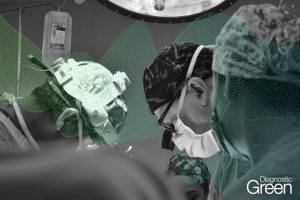Importance: Carcinoma of Unknown Primary (CUP) presents a clinical challenge for practitioners. The current diagnostic approach often involves extensive imaging and examinations, with variable success. We aimed to evaluate the effectiveness of Indocyanine Green (ICG) injection using the Da Vinci robot to aid in intraoperative decision making.
Objectives: To evaluate the diagnostic utility of ICG use during robotic surgery to aid in either the identification of the primary tumor or to delineate the extent of disease to guide excision.
Methods: This study involved a retrospective review of patients treated at the Massachusetts Eye and Ear who underwent robotic surgery with the utilization of Indocyanine Green (ICG) from October 1, 2022. All patients in the study were operated on using the SP model of the Da Vinci robot. Basic demographic and pathologic data were recorded. Intraoperative data points included assessing the presence of an identifiable primary tumor using white light only and documenting the confidence level of ICG localization.
Results: In total, 28 patients who underwent robotic surgery using ICG were identified for this study. The mean age of the cohort was 62 years. Twenty-six patients were male, and the primary diagnosis was HPV-related squamous cell carcinoma (SCCa) in 22 patients, HPV-negative SCC in 5 patients, atypia in 1 patient, and metastatic papillary thyroid carcinoma in 1 patient. Nine patients had either PET-localizing or visually identified primary tumors, and ICG was used to guide the surgical extent of resection. The remaining 19 patients had CUP. Within the patients with CUP, the primary was ultimately identified in 16 of the 19 (84.2%) patients. In regard to ICG localization, this resulted in a True Positive detection in 10 patients (52.6%), False Positive detection in 6 patients (31.6%), False Negative detection in 0 patients (0%), and True Negative detection in 3 patients (15.8%). Based on a confusion matrix of the aforementioned values, the calculated sensitivity, specificity, PPV, and NPV were 100%, 33.3%, 62.5%, and 100%, respectively. The discriminatory index of ICG in the detection of unknown primary disease was found to be 66.6%.
Conclusion: The integration of systemic ICG injection with the Da Vinci SP robot’s real-time imaging capabilities offers a potential option for enhancing primary tumor identification in CUP patients that adds little to no cost, time, and morbidity to the patient. This preliminary analysis suggests that the use of ICG in robotic surgery for CUP holds promise and warrants further investigation to refine surgical techniques and enhance clinical outcomes




